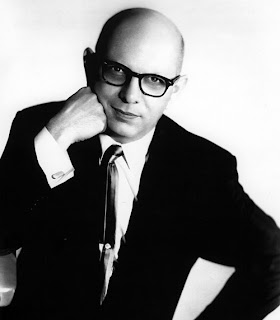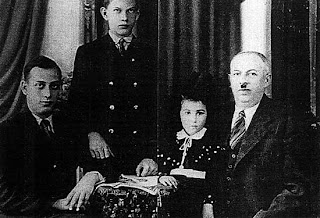BLOGS
"Eshal Elohai," the song for the time of Corona Virus!
I first heard this Yemenite folk song in Jerusalem. "Eshal Elohai" is asking Gd to free those in captivity. Well, I don't know about you, but after sheltering at home this long, I feel like I am in captivity! So here is the perfect song for this time, the time of the Corona virus…
Stay happy and healthy, everyone.
Kadesh Urchatz from the Jews of Calcutta
I was fortunate enough to receive some excellent books of Jewish music from the late, Velvel Pasternack. For more on this knowledgeable and influential musicologist, please see my blog from July 2019.
There were books he gave me of Sephardic music, Hassidic music, and others. I perused these and found many songs containing the same liturgy but different melodies, depending on which communities the songs came from. Not so surprising, considering the vast Jewish diaspora.
The holiday of Pesach (Passover) was approaching and I began searching for some good songs for that holiday as I am frequently called to lead musical seders. "Kadesh Urchatz" is the seder, itself, the order of things in that ritual meal and "seder" means order. I found a few different versions but the one that caught my attention was the "Kadesh Urchatz" from the Jews of Calcutta. It flowed beautifully and set the seder up in a way that felt ideal for a symposium. I took a few liberties with the melody and chords but did my best to remain faithful to the essence of it.
For Pesach Sheni (second Passover) on zoom, in addition to having several, talented guests do what they do, I played a few tunes having to do with the Pesach. One of them was "Kadesh Urchatz." So many people wrote in about it that I decided to play it again by itself and here is my video of it from home. It is my way of extending my hand to the Jews of Calcutta from this Jew of the Ashkenaz.
The sage of Jewish music: Velvel Pasternak

Rebbe Soul: How You Gonna Know If You Don't Try?
At the Center For Spiritual Living with the great Andy Howe on piano. From "RebbeSoul-O." Also, the Minister Stephen Rambo at the end.
Love Live Forgive by Justine St. Vincent features RebbeSoul
I am quite privileged and grateful to be one of the artists featured in this excellent book by Justine St. Vincent.
Wonderful vision! Wonderful work! Check it out
-RebbeSoul
Tzena Tzena, Issachar Miron, and our new video
"Tzena Tzena" was written in 1941 by Issachar Miron and Yehiel Chagiz. They were both in the Jewish Brigade of the British Army. The song became a hit here (Palestine, at the time) Pete Seeger heard it and brought it to his band, The Weavers who recorded and released it in 1950. It reached #2 on the Billboard charts and then nearly every major recording artist in America at the time, recorded it.
The surviving songwriter out of the two is Issachar Miron, who just celebrated his 93rd birthday. I was introduced to him by singer/songwriter and good friend, Rahel Limor. Issachar invited me to visit him in his home in NYC and while there, he showed me his recording studio in his home, complete with keyboards, Mac computer system, ProTools, Waves, etc. He is amazingly active, sending files to me using Dropbox, while engineers and musicians are busy recording in his studio, ... all this at age 93!
This is Issachar in 1950 (below), when "Tzena Tzena" was released by the Weavers. Within a short time, the song would be recorded by all the stars in America including Bing Crosby, Ray Charles, Pearl Bailey, the Smothers Brothers, just to name a few. This is Issachar at the beginning of his rise to fame.
Here he is today (below) with his wife Tsipora, also still alive and a renown concert pianist.
or copy and paste this link: https://www.youtube.com/watch?v=N7cegxmRvMM
Every Song Has A Story
I'm at the University of Warwick in England, getting ready for a presentation on the stories behind the RebbeSoul songs and other world music. This is for the Limmud conference here which attracts 2500 participants from all over the world, learning about various elements of Judaica. Some of the best people in their fields are here and I was even able to attend some of the sessions, all of which were superb. Shlomit gave one today and dazzled and charmed everyone with her singing and dancing as well as with her storytelling about Yemenite life. It went so well, we sold out of all our CDs!
- There's a beautiful melody that came from a Pesach (Passover) seder from Calcutta. It even works on guitar and sounds best when a group of people are singing it together, as in a seder meal. There are still Jews in India but although never persecuted there, at least, as far as I know, most have moved either to the UK or to Israel. I also wonder how many Jews from Calcutta still remember or are aware of this song of theirs.
- On a Friday night in LA, I attended a Shabbat dinner at a Lubavitch home and all the men began singing this song, Tzamah L'Cha Nafshi, pounding out a steady beat on the big, wooden table. I imagined this same scene at the tables of my ancestors from Eastern Europe. Men, sitting around the dinner table, speaking words of Torah and singing and banging on the table late into the night. The melody was infectious and I went back to record the rabbi, singing it, to make sure I got it right. I've always made sure to do my homework on traditional material so if I do make a change, it's an artistic choice and not one of error or simply lazy research. I recorded Tzamah L'Cha Nafshi, for my Fringe of Blue album, and even asked the rabbi to sing part of it. That sound bite wound up as the opening track for the album. I remember, I was living in an apartment in LA and did much of my recording there. My bedroom closet shared no walls with anyone and was the most soundproof spot in my place. So there was the rabbi, Chaim Dalfin, singing it wonderfully, yes, you guessed it, in my closet. I loved his vocal - so honest and with that intense, Ashkenazi musical personality, so fitting for the song. Tzamah L'Cha Nafshi is from Tehillim, the Psalms and in English, roughly translates as "my soul thirsts for You." For Fringe Of Blue, I recorded it instrumentally but as we started playing it live, it became apparent that the singing made it even better. I did a vocal version on Change The World With A Sound and the song eventually became the opener for our concerts, bring people to their feet from the very first note. Neeyah and Lena K sang on it, along with me on the recording and really brought it to life.
- Shlomo Carlebach's V'Shamru. It might be interesting to present the version with the singing and all and then play it the way it is on the From Another World album, which is entirely the music of Reb Shlomo but done instrumentally. This is the track that opens up the album and was fun for me to play more of a bluey, the way I used to play before I embarked on RebbeSoul with the more ethnic style. It was a return to my musical roots, which are American while still playing with my Jewish roots. I wrote a blog in February of 2012 on the meaning of the song. I even wrote a blog about the recording of the song which is here: http://brucespeaks-rebbesoul.blogspot.co.uk/2010/09/recording-vshamru.html. That was an interesting experience which occurred shortly after I made aliyah to Israel.
- On my very first album, the first song to enjoy radio airplay was Sister Sarah. It was also my first attempt at writing lyrics. I had played with enough talented songwriters to know what a good song lyric was supposed to be like but wasn't sure if I could really do it. I decided to write lines that sung well and rhymed and hoped that they would make some sense. Sister Sarah wrote itself. The words just flowed off the pen and there were only a few parts I even had to think about and I managed to fill them in over the course of a few days. I remember one moment, arriving early at a rehearsal for a blond, bombshell LA singer and sitting in my car, writing a few phrases to fill in the empty gaps in the lyrics. Somehow the song just worked, even though I didn't know what it meant. It just sounded good. Once it got on the radio, I was invited over to a rabbi's house for Purim and while quite inebriated in the holiday tradition, he sat me down and proceeded to explain to me, the meaning of the lyrics that had written themselves and how they alluded to lofty, Kabbalistic and Torah concepts that were, and probably still are, way beyond my comprehension.
- There's always Avinu. I first thought of recording it while at Yom Kippur services with friends in Berkeley CA. I had heard the melody all my life but this time I could not get it out of my head and thought it would be a nice project, especially since I had just assembled my first recording studio and was looking for a song to start off with. There is a different version of Avinu on each RebbeSoul album. I've got plenty of stories about them and this could easily be a blog on its own.
- Kaddish is one of my favorites and took 2 years to complete. It comprises field recordings or samples of Kaddish prayers from Israel, the United States, and Europe. I wrote a blog about it, particularly the very first field recording I did which was at Amuka in Israel and featured an Ethiopian reciting Kaddish. The others to follow were the Sephardim at Abu Hav in Tzfat, Yemenites in Ashkelon, Hungarians at the yahrzeit of the Ramban at his grave in Tiberias, an Ashkenazi at the kotel, singers from India, Moroccans and Persians in Los Angeles, and me on my balalaika, caxixi from Brasil, bendir from Morocco, and so on. The original blog is here: http://brucespeaks-rebbesoul.blogspot.co.uk/2011/05/visit-to-amuka-and-making-of-kaddish.html.
The Remaking of Tzena Tzena
Click here to watch the video/blog: http://www.youtube.com/watch?v=viMSloK6RT0
Or here:
To listen to Tzena Tzena, click here: http://www.youtube.com/watch?v=N7cegxmRvMM]
Or here:
Shlomit hits the stage...
For those of you celebrating it, I hope you had a beautiful and meaningful Shavuot!
This is what happens in Israel when Shlomit Levi hits the stage and opens her mouth. It takes only seconds and you get the reaction, especially with a Yemenite audience. I managed to get only about 20 seconds of this using my iphone and it's certainly worth seeing and hearing. Notice there is not even a band. It's only her.





